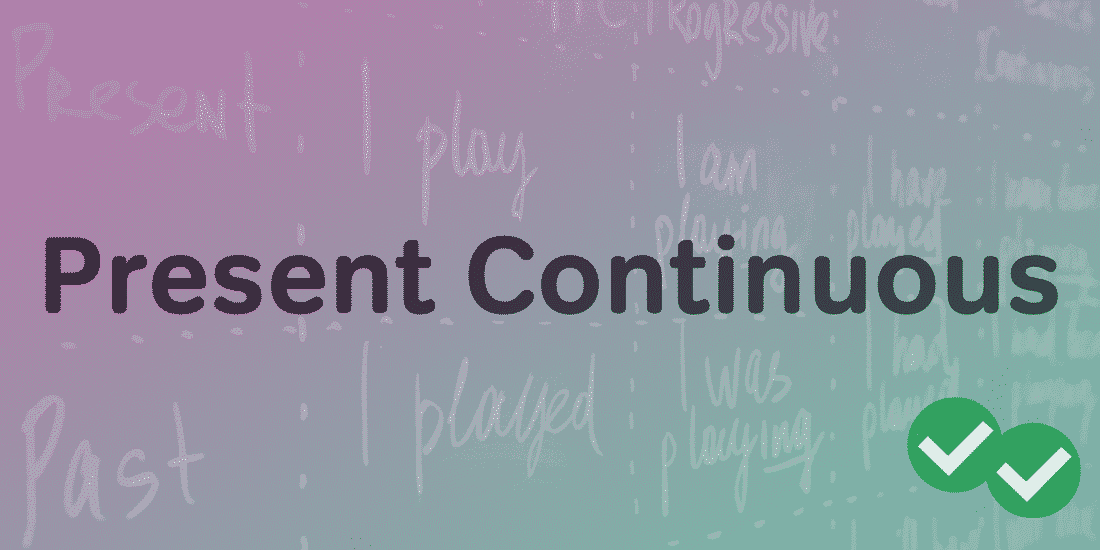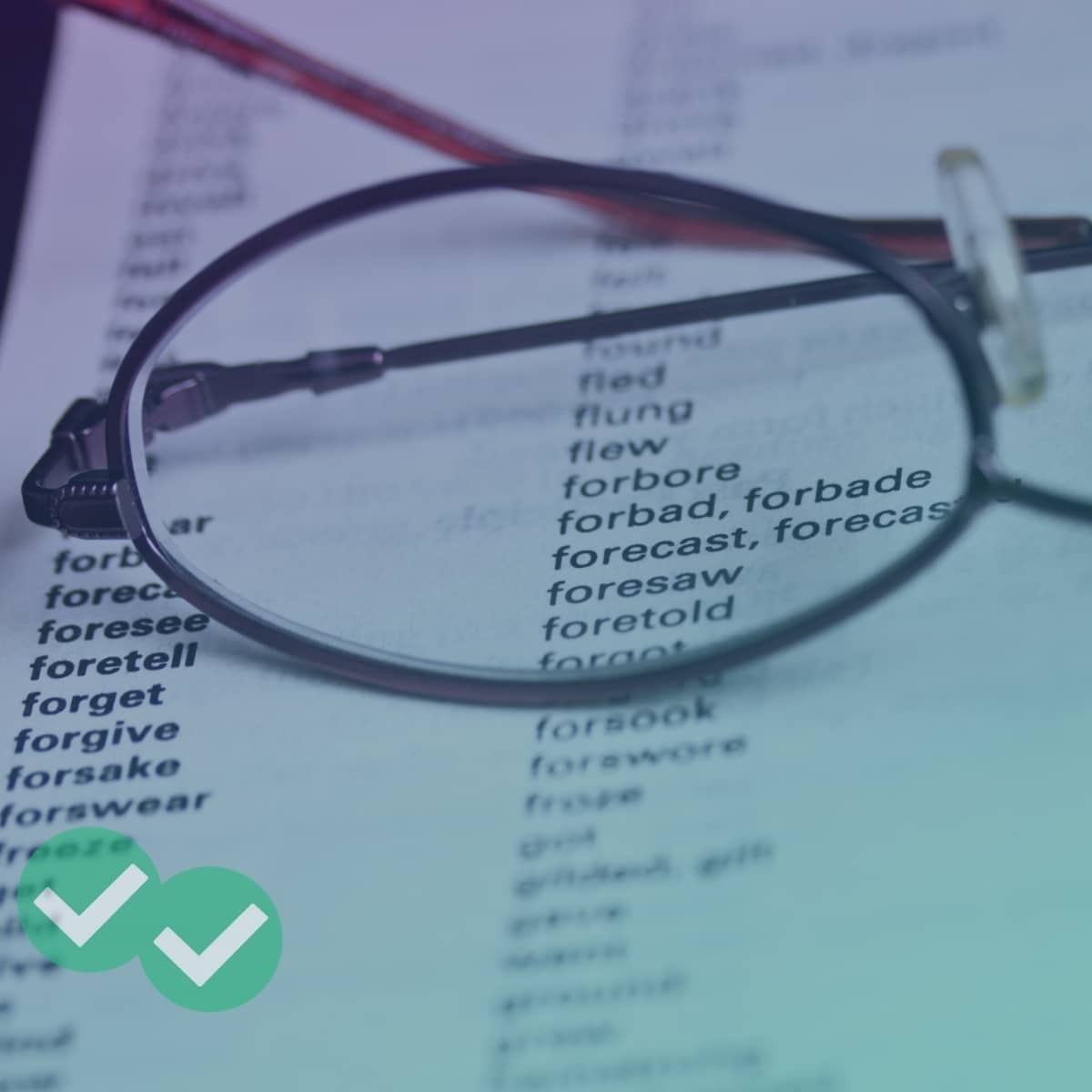
This article focuses on how to form and use the present continuous tense. For resources on all verb tenses, visit our page on the 12 English Verb Tenses.
Check out this video breaking down the present continuous tense. Then, keep reading to see a more detailed explanation with examples!
Forming the Present Continuous Tense
Quick Reference Table: The Present Continuous Tense in All Forms
KEY
Ving → Present Participle
| Forms | Verbs |
| + | To be [am, is, are] + Ving
I am running today. |
| ? | To be [am, is, are] + subject + Ving
Are you running today? |
| – | To be [am, is, are] + not + Ving
I am not running today. |
The formula for writing in the present continuous is: ‘be’ verb [am, is, are…] + present participle.
Examples:
- He is driving erratically.
- She is making a move.
- They are sitting at the table.
- They are moving to another table.
- We are baking a cake.
Making It Negative
To make the present continuous tense in negative form, use this formula: [am, is, are] + not + present participle.
Examples:
- She is not making sense.
- We are not going with you.
- Terrence isn’t working on his project.
- They aren’t playing the game this evening.
- I’m not kidding with you.
Asking a Question
When asking a question in the present continuous tense, use the formula: [am, is, are] + subject + present participle.
Examples:
- Is she going with us?
- Are they running today?
- Are you working tonight?
- Is he writing me a ticket?
- Am I the only one hearing this?
When To Apply the Present Continuous Tense
We use the present continuous tense to give energy to something that is happening and combine this tense with a dynamic verb (a verb that shows action).
Use #1
When describing an action that is (or isn’t) happening now or at this exact moment.
Examples:
- I am reading.
- She isn’t going.
- They are running the race.
- He isn’t working.
- Are you listening?
Use #2
When describing something you are in the process of doing.
In English, we describe things as in the present or “now” when talking about things we’re in the process of doing. It could take a month, a year, a century, or even just a second, but the present continuous is used if you’re in the middle of something.
You can use this tense even if you’re not actually performing the action at that exact moment. If you’re in the process, the present continuous can be used!
Read the examples below to see what we mean.
Examples A:
- I am studying to be a surgeon.
Becoming a surgeon takes years of education and practice, but we say it in the present continuous tense.
Also, someone could be elsewhere doing other things and make this statement. The individual doesn’t have to be studying at the same time, but they can still use this tense.
Example B:
- I am reading War and Peace
Les Miserables is a very long novel and would take most people many hours to get through the entire book (Maybe even a few years… seriously, it’s a long novel!). You could be at a bar doing something else at that exact moment in time you said that sentence.
But, if you’re in the process of reading Les Miserables, then the present continuous tense is also correct to use.
More Examples:
- They are restructuring their infrastructure.
- Joe is working on a new project.
- She is building a new network.
Use #3
When indicating something that will (or will not) happen in the near future, especially when talking about plans.
Examples:
- I’m driving to the concert later.
- We’re watching the Super Bowl tonight.
- They’re running in the race later today.
Use #4
When expressing irritation. Used with “always” or “constantly”
Examples:
- She is always talking during movies.
- He is constantly begging me to go on a date.
- They are always complaining about the lack of resources for the department.
When Not To Use It
Don’t use the present continuous tense with ‘stative’ verbs (verbs that describe a state but no action). These verbs should remain in the simple present tense.
- He is sounding like he had a bad day. – Incorrect
- He sounds like he had a bad day. – Correct
- She is needing a new dress. – Incorrect
- She needs a new dress. – Correct
**Note: There are verbs that can be both stative and dynamic, and you can use present continuous with the dynamic form of the verb.
You’ve got the grammar. You’ve got the rules. With practice, you’ll be able to master the present continuous tense too!



